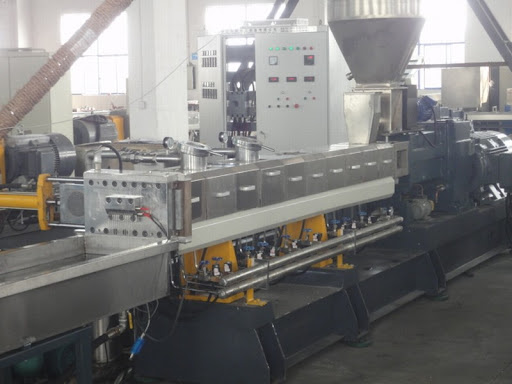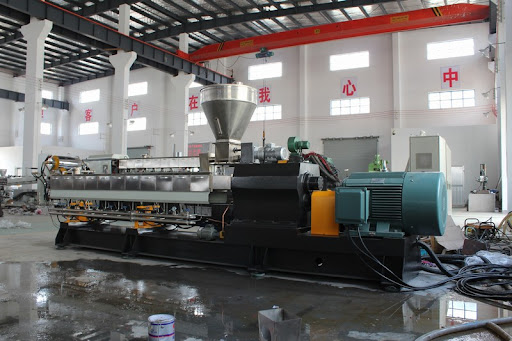Twin screw extruder is the classic machine used for the plastic extrusion process when two or more ingredients are mixed or Twin Screw Extrudercompounded. Twin screw extruder is particularly useful in the production of rigid PVC and wood fiber blends.
Twin-screw extruders consist of two screws mounted in a barrel having a “figure-eight” cross section. The “figure-eight” cross section comes from the machining of two cylindrical bores whose centers are less than two radii apart.
Twin-screw extruders are classified by the degree to which the screws intermesh and the direction of rotation of the screws.
The flow of material in twin-screw extruders is very complex, and the flow patterns are difficult to predict mathematically.
For this reason, Modern extruders have a modular screw design to facilitate efficient mixing in the barrel and barrel elements can be changed.
The screw design can be changed by changing the sequence of the screw elements. Hence, much of the design of twin-screw extruders are done on an empirical basis. One can use a combination of screw elements and kneading blocks to accomplish a given operation.

A screw turns in a barrel and pushes the plastic forward. A screw is really an inclined plane or ramp wound around a central core. The intent is to multiply the force so that great resistance can be overcome. In the case of an extruder, there are three resistances to overcome: the rubbing of solid particles (the feed) against the barrel wall and each other in the first few turns of the screw (the feed zone); the adhesion of the melt to the barrel wall; and resistance to flow within the melt as it is pushed forward.
Twin-screw machines can be used in kneading, dispersive mixing, distributive mixing, and reactive extrusion and are widely applied for compounding various fibers, fillers, and polymer blends prior to final molding.






